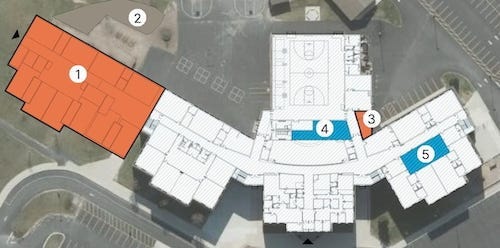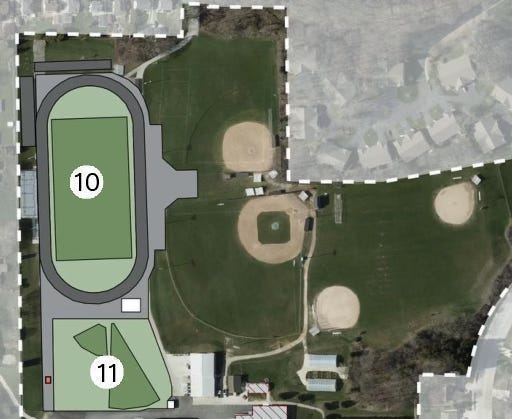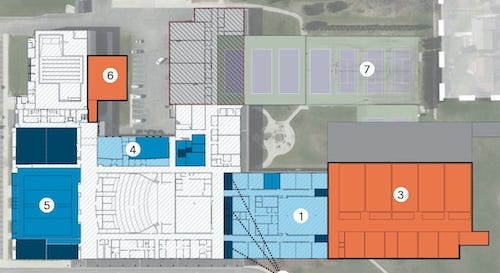Fall referendum trade-offs
The plan to combine science, technology, and infrastructure improvements with subsidizing daycare and re-laying out athletic fields and locker rooms would exceed $19,000 per household
If you’re an average family in Sheboygan Falls, you have a $19,000 decision on Tuesday, November 5. If voters approve the referendum, the 5,214 households in the school district will spend $100 million plus interest on school facilities. You’ll pay much of the $19k through your property taxes, which will increase from $1,185 to $1,520 for a $150k home. Rent rates will follow suit. You’ll pay the rest through higher prices and lower wages passed on by businesses paying their property taxes.
The $100M prices out at 10 years of K-12 instruction ($10M/year) or 3 middle schools (ours cost $31M). Without a new school planned, where would all that tax money go?
Daycare wing
A large chunk is a new daycare wing. The district currently subsidizes public daycare through buildings that taxpayers built, maintain, and operate. The elementary school addition would greatly expand the project.
Taxpayer-funded daycare has some plusses, such as helping families and supporting special-needs children. For ordinary children, however, daycare research shows worse impulse control, aggression, hyperactivity, stress, and emotional and physical health. Daycare subsidies discriminate against parents who raise their children at home, whereas equitable alternatives like child tax credits support all parents.
A daycare wing also wouldn’t have a practical effect on school capacity, since classrooms would stay the same size. Stats showing the elementary school over capacity assume daycare gets priority over students. The district’s 2023 facilities study calculated a functional capacity of 754 students (current enrollment is 588).1
Athletic facilities
Another spending chunk would modify the athletic facilities. How much use the new fitness center would get is unknown, since the YMCA’s fitness center has plenty of capacity. The locker room re-layout would shrink boys spaces, despite far less costly ways of continuing equal benefits, opportunities, and treatment for boys and girls teams overall. Imagine if booster clubs had access to the millions being considered.
The athletics changes would also reorient the ballfields to put fans closer to the concession stands — somewhat valuable but well below the “worth it” threshold of non-tax funding through increased concession proceeds. The fields would also get better drainage, but postponed ball games on decent-weather days are rare anyway.
For soccer, a high-school field would be nice, but the football field is currently separate for a reason. In late fall, instead of playing in the sun, the Kohler soccer team waits at night for football games to finish. Plymouth also has a turf field but avoids resource contention by still playing soccer on grass.
Technology and infrastructure
The spending chunks I’m excited about are the science and technology area updates. These would have a direct impact on student academics and trade skill development. That said, extending the E-wing would be better than tearing it down and rebuilding over the tennis courts.
While less exciting, the chunks for infrastructure are still important. Some, like roof, HVAC, and playground upkeep, are ordinary capital maintenance that don’t need a referendum, but get included to allow for a larger school operating budget. Not so ordinary are the elementary school windows. They’re performing poorly because they’re not proper commercial grade. Let’s hope for a lessons-learned report that corrects any errant processes to ensure sound purchases going forward.
Finally, the high school partitioning chunk restricts building access during after-school sporting events. It’s a small plus for security but is largely redundant with the $250k spent last year on new security cameras and equipment.
Student impact
If you keep your $19k, how would students fair? Their families would decide how to spend their own $19k (e.g., for college). Important capital maintenance would continue, with discretionary improvements awaiting a reprioritized April referendum.







